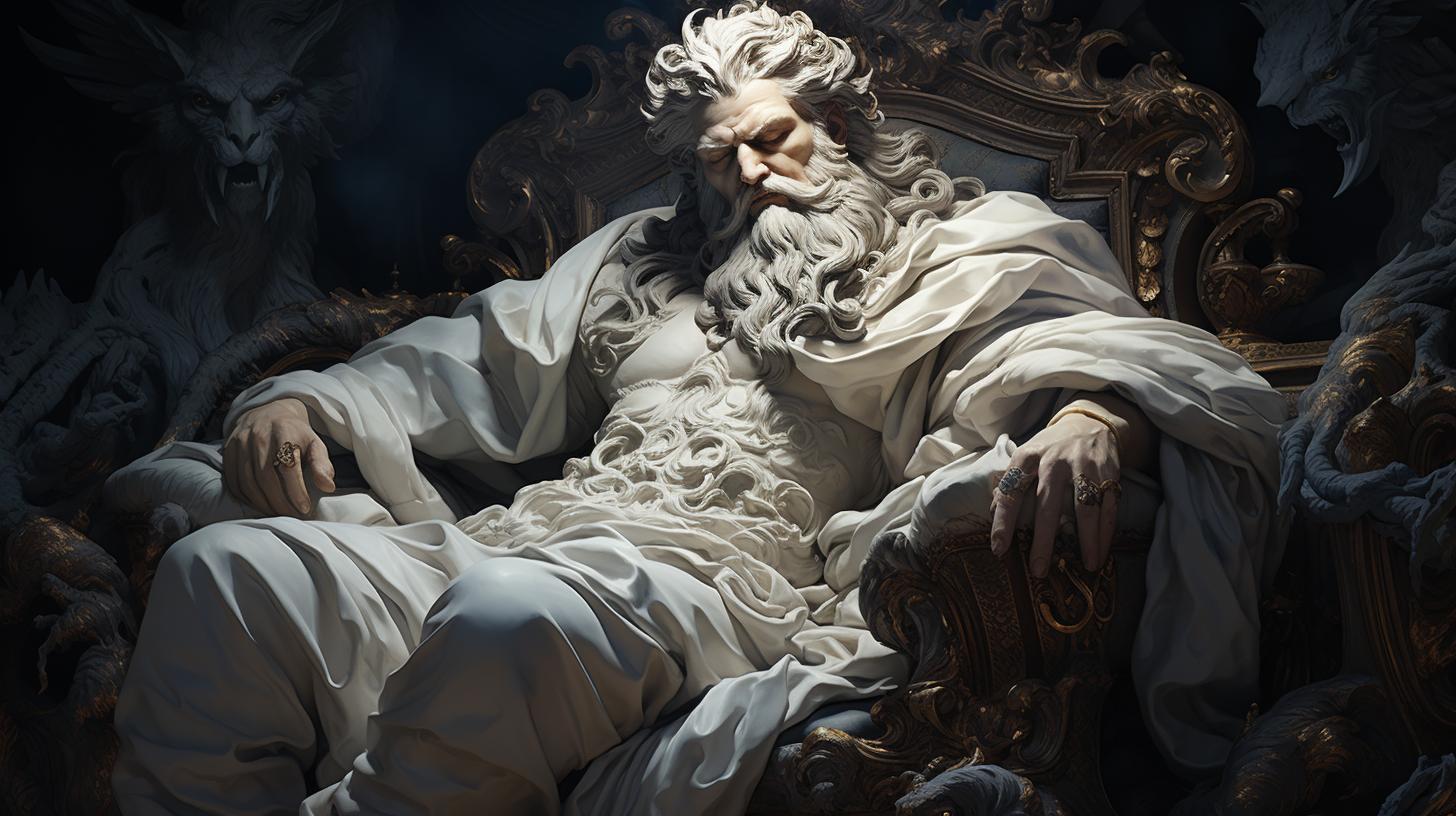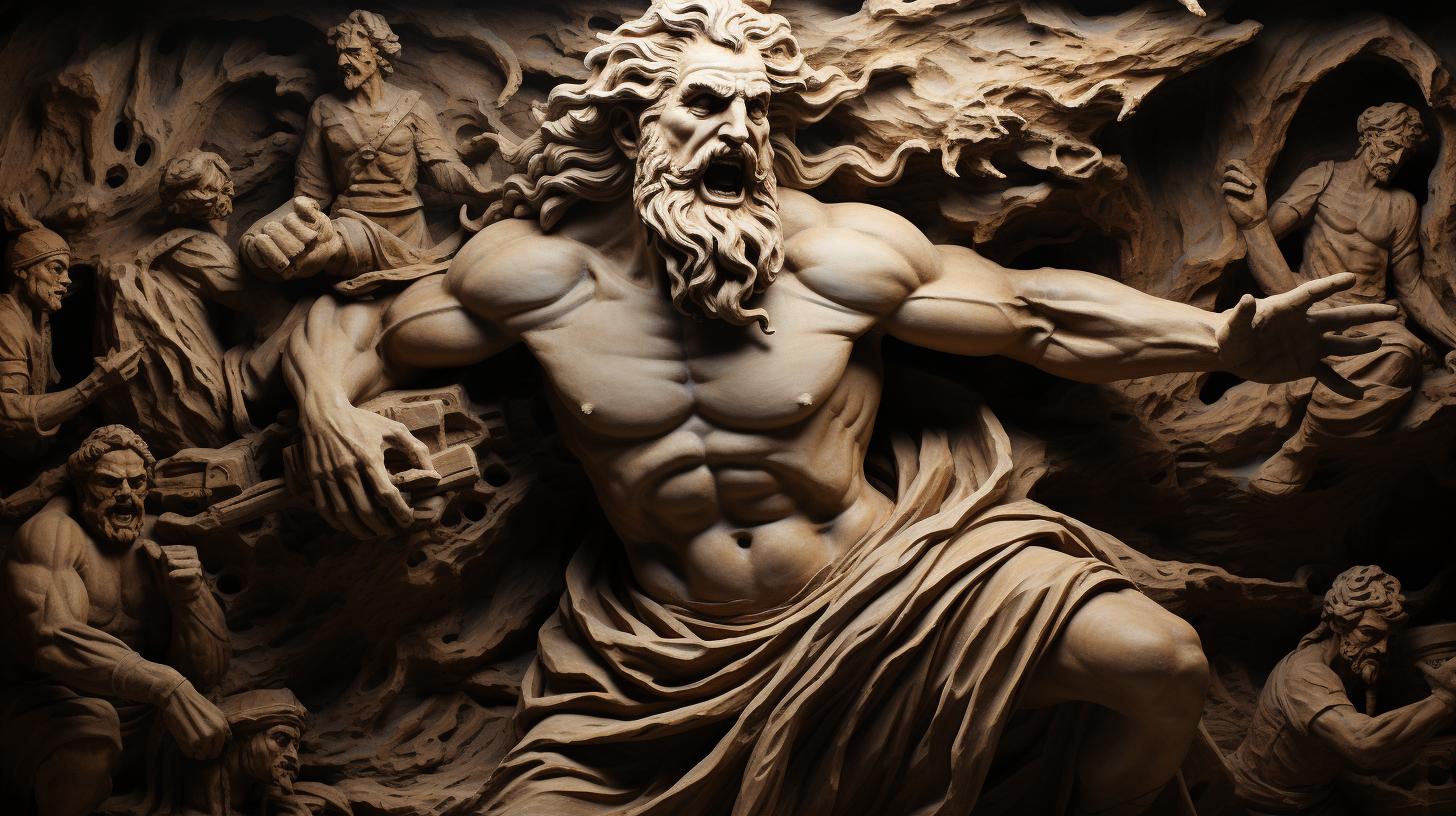The Mythological Tale of Narcissus: Exploring the Greek Story of Narcissus’ Self-Reflection

The mythological tale of Narcissus in Greek mythology has captivated audiences for centuries. Narcissus, known for his extraordinary beauty, inadvertently fell in love with his own reflection in a pool of water, mystified by its allure.
This ancient legend explores the consequences of self-obsession and vanity, shedding light on the tragic outcomes that can arise from excessive self-admiration. Various versions of the Narcissus myth have been depicted in art throughout history, and his story continues to resonate in the field of psychology, where narcissism and its implications are studied.
Additionally, the cultural impact of Narcissus extends to literature, music, and symbolism associated with the captivating narcissus flower. Explore the enthralling story and enduring legacy of Narcissus in this comprehensive article.
The Legend of Narcissus in Greek Mythology
The captivating tale of Narcissus in Greek mythology delves into the tragic consequences of self-obsession and vanity. This myth explores the mythical origins of Narcissus, as well as his renowned encounter with the nymph Echo.
The Origins of Narcissus
Narcissus, a renowned hunter from Thespiae in Boeotia, was widely recognized for his exceptional beauty. The son of Cephissus and Liriope, or in alternative versions, Selene and Endymion, Narcissus captivated the hearts of many individuals who were irresistibly drawn to his allure.
Narcissus and the Nymph Echo
Among the admirers of Narcissus was the nymph Echo, who fell deeply in love with him. However, her love remained unrequited, as Narcissus rejected all who expressed affection towards him. In a cruel twist, Echo’s loquacious nature was silenced by a curse from the goddess Juno, leaving her only able to echo the words of others.
Narcissus, heedless of the consequences that awaited him, encountered his own reflection in a shimmering pool of water. Unaware that it was his own image, he fell in love with it instantly, captivated by the beauty that stared back at him.
Tragically, Narcissus’s infatuation with his own reflection consumed him. Consumed by self-adoration, he pined away, unable to tear himself away from the captivating visage he saw. Eventually, he transformed into a beautiful golden and white flower, forever memorialized as the narcissus.
The story of Narcissus leaves us with profound reflections on the dangers of excessive self-adoration and the tragic consequences that accompany it.
Different Versions of the Narcissus Myth
The story of Narcissus has been retold and reinterpreted in various versions throughout ancient Greek mythology. These variations shed light on different aspects of Narcissus’ character and the consequences of his self-obsession.
Ovid’s Retelling in ‘Metamorphoses’
In Ovid’s epic poem ‘Metamorphoses,’ Narcissus is described as a young hunter renowned for his beauty. Echo, a nymph cursed by Juno to only repeat the words of others, falls in love with Narcissus but is rejected.
As punishment, Narcissus is lured to a pool where he becomes infatuated with his own reflection. Unable to possess his own image, he dies of unrequited love and is transformed into the narcissus flower.
Variations in Ancient Greek Mythology
While Ovid’s version is well-known, there are other variations of the Narcissus myth in ancient Greek mythology. Some tales suggest that Narcissus was the son of Cephissus and Liriope, while others claim he was the offspring of Selene and Endymion.
Additionally, different accounts mention his encounter with the enchanting nymph Echo, who loses her voice due to Juno’s curse. The myth also portrays the intervention of the goddess Nemesis, who, upon hearing the pleas of a lovestruck youth ignored by Narcissus, punishes him.
Regardless of the specific details, all versions symbolize the tragic consequences of unrestrained self-admiration and the destructive power of vanity.
Symbolism and Themes in the Story of Narcissus
The myth of Narcissus in Greek mythology carries deep symbolism and explores several themes that continue to resonate with audiences today. From reflections on narcissism and vanity to the tragic consequences of self-admiration, this section delves into the profound insights embedded within the story of Narcissus.
Reflections on Narcissism and Vanity
Narcissus’ obsession with his own reflection highlights the human tendency towards self-absorption and excessive self-admiration. This theme prompts us to reflect on the dangers of an inflated ego and the negative impact it can have on personal relationships and genuine connections with others.
Narcissus’ relentless rejection of those who loved him reveals the destructive nature of vanity, emphasizing the importance of humility and empathy.
The Tragic Consequences of Self-Admiration
As the story unfolds, we witness the tragic consequences that arise from Narcissus’ fixation on his own beauty. His self-centeredness leads to the demise of the nymph Echo, who loses her voice and fades away due to unrequited love.
This narrative warns us about the dangers of self-obsession, highlighting the potential for isolation, loneliness, and the loss of meaningful connections when we prioritize our own image above all else. It serves as a cautionary tale reminding us of the importance of balance and the detrimental effects of excessive self-focus.
Artistic Depictions of Narcissus in History
The story of Narcissus has fascinated artists throughout history, inspiring numerous depictions in various art forms. From ancient Greek and Roman works to the Renaissance, Baroque, and modern interpretations, Narcissus continues to captivate artistic imagination.
Narcissus in Ancient Greek and Roman Art
In ancient Greek and Roman art, Narcissus frequently appeared in paintings and sculptures. Artists portrayed him gazing at his reflection in different poses, capturing the essence of his self-obsession. These artworks aimed to evoke the beauty and tragedy of Narcissus’ story, reflecting the themes of vanity and self-absorption.
Renaissance and Baroque Interpretations
During the Renaissance, artists revived the tale of Narcissus, incorporating their own interpretations and styles. Renowned painters like Caravaggio and Titian depicted Narcissus as an alluring figure, often surrounded by lush landscapes.
Their compositions became more intricate, showcasing the growing complexity of artistic techniques.
In the Baroque period, Narcissus continued to be a favorite subject. Artists such as Caravaggio, Bernini, and Rubens explored his story with dramatic flair, employing exquisite lighting, intense emotions, and intricate details.
These works aimed to provoke strong emotional responses from viewers, highlighting the tragic nature of Narcissus’ self-absorption.
Narcissus in Modern and Contemporary Art
The myth of Narcissus has also found its place in modern and contemporary art movements. Artists in the 20th and 21st centuries have pushed boundaries, reimagining and reinterpreting Narcissus in their unique styles and mediums.
Sculptors, photographers, and painters continue to explore the themes of self-reflection, identity, and the allure of beauty.
In this digital age, artists have embraced new technologies to present Narcissus in innovative ways.
Digital art installations and interactive exhibits allow viewers to engage with the story of Narcissus in immersive and thought-provoking ways, inviting contemplation on society’s obsession with self-image and the gaze.
Narcissus remains an enduring muse for artists across centuries, embodying themes of beauty, self-obsession, and the complexities of human nature.
Through their artistic depictions, these creators invite us to reflect on ourselves and the consequences of excessive self-admiration.
Influence of the Narcissus Myth in Psychology
The story of Narcissus in Greek mythology has had a significant impact on the field of psychology, particularly in understanding and studying narcissism and its related disorders. This section explores the influence of the Narcissus myth in psychology, focusing on two key aspects: narcissism and narcissistic personality disorder, and the concept of narcissism in psychoanalysis.
Narcissism and Narcissistic Personality Disorder
Narcissism, derived from the mythological character Narcissus, refers to an excessive self-admiration and preoccupation with one’s own appearance and achievements. It involves a grandiose sense of self-importance, a constant need for admiration, and a lack of empathy for others.
Narcissistic personality disorder (NPD) is a psychological disorder characterized by an exaggerated sense of self-importance, a strong need for admiration, and a lack of empathy. Individuals with NPD often have a distorted self-image and engage in manipulative and exploitative behaviors to maintain their self-esteem.
This disorder has been extensively studied and classified within the Diagnostic and Statistical Manual of Mental Disorders (DSM). It has significant impact on both the individual’s personal relationships and overall functioning in various life domains.
The Concept of Narcissism in Psychoanalysis
In psychoanalysis, the concept of narcissism explores the formation of self-identity, the development of the ego, and the relationships between the self and others. Sigmund Freud introduced the concept of primary narcissism, which refers to the infant’s initial self-centeredness and lack of differentiation between self and others.
Later, psychoanalyst Heinz Kohut expanded upon this concept, distinguishing between healthy narcissism, necessary for a strong self-esteem, and pathological narcissism, which involves a self-absorption that disrupts interpersonal relationships and healthy functioning.
Psychoanalytic theories emphasize the role of early childhood experiences, particularly in parent-child relationships, in shaping narcissistic tendencies and the development of narcissistic personality traits. These theories provide insight into understanding narcissism as a complex psychological phenomenon.
By exploring the influence of the Narcissus myth in psychology, researchers and clinicians gain a deeper understanding of narcissism, its manifestations, and its impact on individuals and society as a whole.
Cultural References and Legacy of the Narcissus Myth
The story of Narcissus in Greek mythology has left a significant cultural legacy, inspiring various artistic and literary works, as well as finding its way into popular culture and media.
This section explores the enduring impact of the Narcissus myth in different aspects of our society.
Narcissus as a Symbol in Literature and Music
The tragic tale of Narcissus has captivated the imaginations of countless authors and musicians throughout history. In literature, notable references to Narcissus can be found in works such as Oscar Wilde’s ‘The Picture of Dorian Gray’ and the poetry of W.B.
Yeats. Additionally, musicians have drawn inspiration from Narcissus, with pieces like Sergei Rachmaninoff’s ‘Piano Concerto No. 2’ showcasing the theme of self-reflection and introspection.
The Narcissus Flower and its Symbolism
The association between Narcissus and the flower of the same name has sparked much debate. Some argue that the flower was named after the myth, while others suggest that the myth borrowed its name from the pre-existing flower.
Regardless, the narcissus flower holds symbolism related to beauty, rebirth, and self-admiration. Its delicate white and golden petals have made it a popular motif in gardens and floral arrangements.
Narcissus in Popular Culture and Media
The story of Narcissus continues to resonate with contemporary audiences through its presence in popular culture and media.
Films, television shows, and books often incorporate themes of self-obsession, vanity, and the pursuit of physical perfection, drawing inspiration from the Narcissus myth. This enduring fascination with narcissism reflects society’s ongoing preoccupation with self-image and validation.
Exploring Narcissus in the Digital Age and Social Media
In the digital age, the Narcissus myth takes on new dimensions as social media platforms provide tools for self-promotion and self-exposure. The modern interpretation of Narcissus expands beyond the individual’s infatuation with their reflection to encompass the phenomenon of seeking validation through virtual interactions.
This raises questions about the impact of social media on self-esteem, identity formation, and the prevalence of self-curated personas.
The cultural references and legacy of the Narcissus myth demonstrate its enduring relevance and ability to transcend time.
Through literature, music, artistic representations, and exploration of its implications in the digital age, the story of Narcissus continues to evoke reflection on humanity’s complex relationship with self-image, vanity, and our constant search for affirmation.
.




















